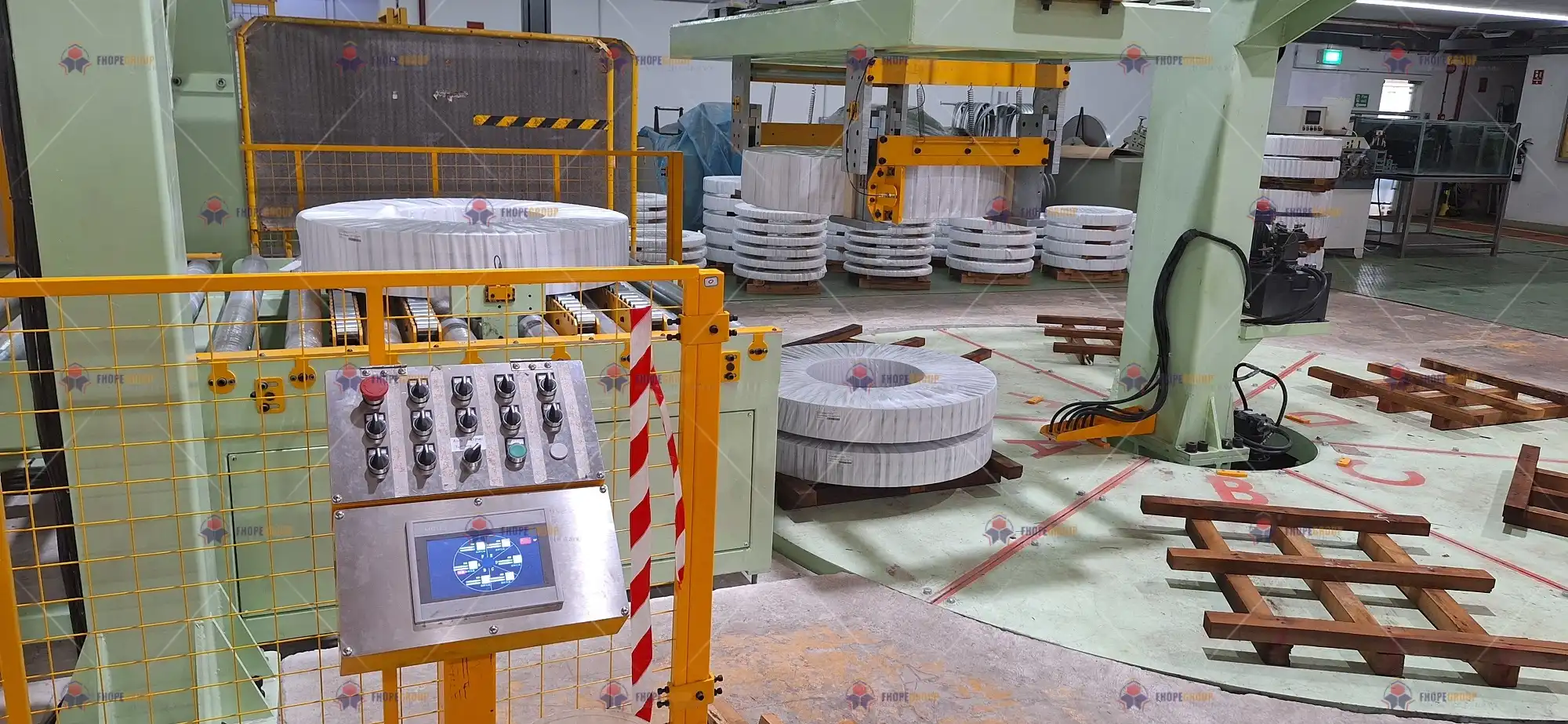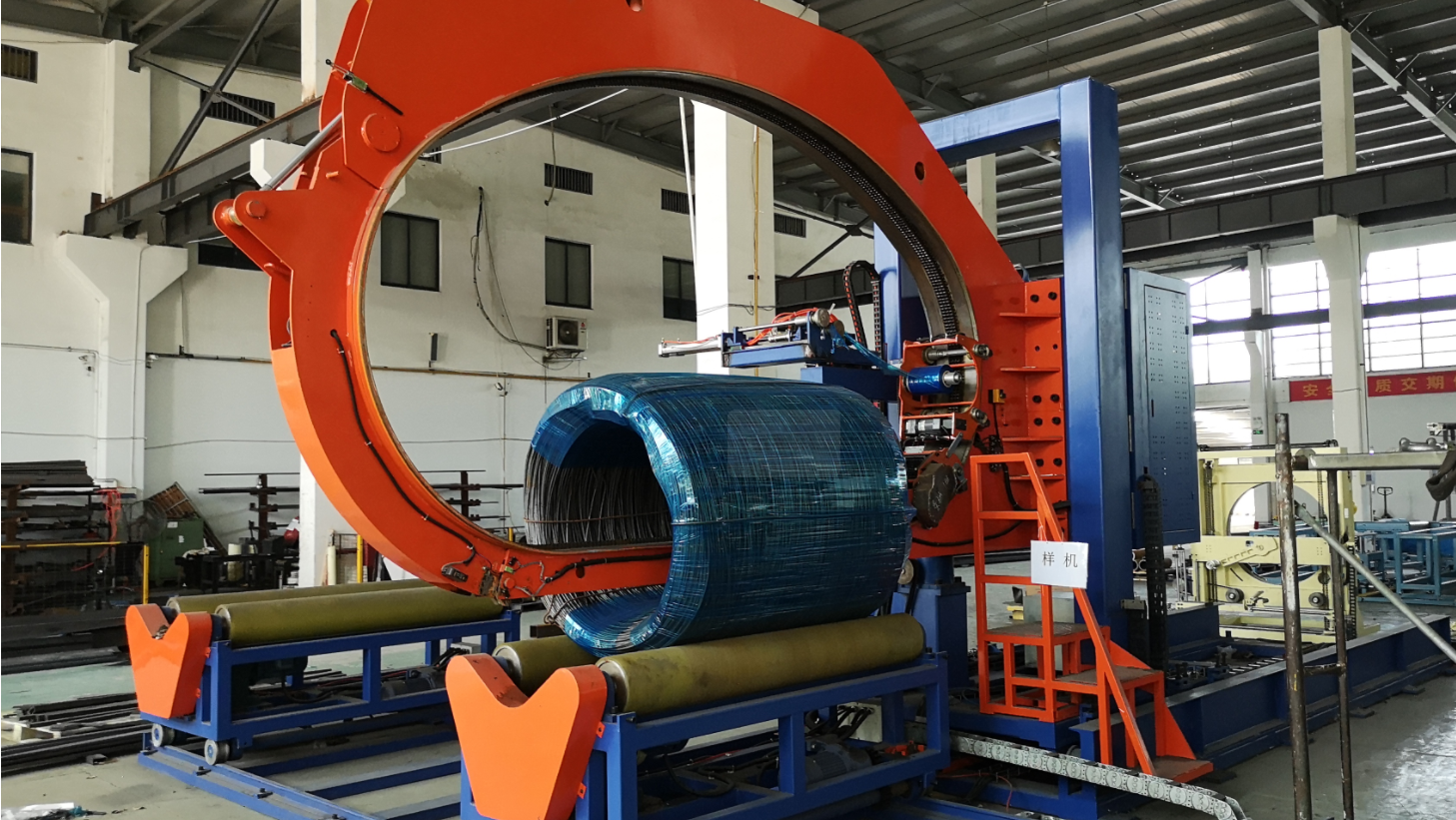The Role of Coil Transport Systems in Modern Manufacturing Plants
Are you struggling with bottlenecks in your manufacturing plant? Imagine a smooth, efficient flow of heavy steel coils, vital for your production line, moving seamlessly from storage to processing. Inefficient material handling can cripple productivity and safety. The solution? Advanced coil transport systems.
Coil transport systems are the backbone of efficient material handling in modern manufacturing plants, ensuring the safe and timely movement of heavy coils. These systems minimize downtime, enhance safety, and boost overall productivity by streamlining the flow of materials from storage to production lines.
Let’s delve into how these sophisticated systems are revolutionizing manufacturing, ensuring operations are not only safer but also significantly more productive. Keep reading to discover the critical role of coil transport systems in today’s manufacturing landscape.
Enhancing Safety with Advanced Coil Transport Systems
Safety in manufacturing plants, especially when dealing with heavy materials like steel coils, is paramount. Accidents can lead to costly downtime, injuries, and even fatalities. Are you confident your current coil handling procedures meet the highest safety standards?
Modern coil transport systems significantly enhance workplace safety by automating heavy lifting and movement, reducing the risk of human error and injury. Features like automated cranes, guided vehicles, and precision controls minimize worker exposure to hazardous situations, creating a safer environment for everyone.

To truly understand the impact of these systems on safety, let’s break down the key improvements:
Key Safety Improvements in Coil Transport
| Safety Aspect | Traditional Handling | Coil Transport Systems | Improvement |
|---|---|---|---|
| Worker Injury Risk | High, due to manual lifting and proximity to heavy loads | Low, automated handling reduces manual tasks | Significant reduction in strain and impact injuries |
| Equipment Operation | Manually operated forklifts and cranes | Automated cranes and AGVs with sensors | Reduced risk of collisions and operational errors |
| Load Stability | Reliance on manual securing methods | Precision lifting and secure transport mechanisms | Minimized risk of coil drops or shifting during movement |
| Workplace Noise | High noise levels from machinery and manual handling | Noise reduction technologies in automated systems | Creates a quieter and safer working environment |
| Emergency Response | Slower response times in emergencies | Integrated safety protocols and emergency stops | Faster and more effective emergency response |
By integrating advanced coil transport systems, manufacturing plants can move beyond traditional, risky handling methods. For example, Automated Guided Vehicles (AGVs) follow pre-programmed paths, avoiding unexpected movements and reducing the chance of collisions. Automated cranes with smart sensors ensure precise coil placement, eliminating the dangers associated with manual crane operation and load instability. These technological advancements collectively create a manufacturing environment where safety is proactively built into the system, rather than being solely reliant on human vigilance. The result is a substantial decrease in workplace accidents and a more secure operation overall.
Boosting Efficiency and Productivity with Streamlined Systems
In today’s competitive manufacturing landscape, efficiency is not just a goal—it’s a necessity. Every minute of downtime, every instance of inefficient material flow, translates directly into lost revenue. Are you maximizing your plant’s throughput?
Efficient coil transport systems are crucial for maximizing productivity in manufacturing plants. By automating and optimizing the movement of coils, these systems reduce handling times, minimize bottlenecks, and ensure a continuous supply of materials to production lines, leading to significant gains in overall efficiency and output.
Let’s explore how different types of transport systems contribute to this efficiency:
Types of Coil Transport Systems and Their Efficiency Benefits
-
Overhead Crane Systems: Ideal for large facilities, overhead cranes offer a bird’s-eye view of material handling, maximizing floor space utilization. Automated overhead cranes, equipped with Warehouse Management Systems (WMS), can precisely locate and transport coils with minimal human intervention. This reduces search times and optimizes storage space.
-
Automated Guided Vehicles (AGVs): AGVs provide flexible and scalable solutions for coil transport. They can navigate complex layouts and adapt to changing production needs. AGVs integrated with Production Management Modules (PMM) ensure coils are delivered just-in-time to production lines, reducing buffer inventory and streamlining workflow.
-
Conveyor Systems: For high-volume, continuous coil movement between specific points, conveyor systems offer unmatched efficiency. Heavy-duty roller conveyors and chain conveyors can handle the weight and dimensions of steel coils, ensuring a constant flow of materials within the plant.
-
Mobile Robot Management Module (MRMM): Extends automation beyond the storage area, managing material flow from receiving docks to storage and production. MRMM optimizes routes for mobile robots, reducing travel time and enhancing the overall speed of material handling processes.
Implementing a combination of these systems, tailored to the specific needs of a manufacturing plant, can dramatically improve efficiency. The result is faster production cycles, reduced lead times, and increased output, directly impacting the bottom line.
Automation and Technology Driving Coil Transport Innovation
The future of manufacturing is undeniably automated. Coil transport is no exception. Imagine a plant where coil movement is orchestrated by intelligent systems, minimizing human involvement and maximizing precision. Is your plant ready for the automation revolution?
Automation and advanced technology are at the forefront of coil transport innovation, transforming traditional material handling into intelligent, self-optimizing systems. These technologies, including AI-driven WMS, robotic handling, and digital twins, are enhancing efficiency, safety, and precision in coil management.
To understand the depth of this transformation, let’s examine specific technological advancements:
Technological Advancements in Automated Coil Transport
| Technology | Description | Benefits |
|---|---|---|
| Warehouse Management Systems (WMS) | Software that manages and optimizes storage, retrieval, and transport of coils. | Real-time inventory tracking, optimized storage strategies, reduced search times, and enhanced order accuracy. |
| Automated Guided Vehicles (AGVs) | Driverless vehicles that transport coils along pre-defined paths. | 24/7 operation, flexible routing, reduced labor costs, and improved safety. |
| Robotic Cranes | Cranes equipped with robotic arms and AI for automated lifting and placement. | Precision handling, reduced damage to coils, faster cycle times, and minimized human intervention. |
| Digital Twin Technology | Virtual replica of the coil warehouse for simulation and optimization. | Performance prediction, bottleneck identification, operator training, and optimized system design. |
| Machine Vision | Cameras and AI algorithms for coil identification and position detection. | Automated coil registration, accurate positioning during loading/unloading, and enhanced inventory management. |
These technologies work synergistically to create a highly automated coil transport ecosystem. WMS acts as the brain, directing operations and optimizing workflows. AGVs and robotic cranes are the muscle, executing tasks with precision and speed. Digital twins provide the foresight, allowing for proactive optimization and operator training in a virtual environment. Machine vision enhances accuracy and eliminates manual data entry. The combined effect is a leap in operational efficiency and a significant reduction in human dependency in coil handling processes.
Cost-Effectiveness and Return on Investment (ROI)
Implementing advanced coil transport systems represents an initial investment. However, considering the long-term benefits, the return on investment can be substantial. Are you looking to reduce operational costs and improve your bottom line?
Investing in coil transport systems is not just about immediate upgrades; it’s about securing long-term financial benefits through:
- Reduced Labor Costs: Automation reduces the need for manual labor in coil handling, leading to significant savings in wages and related expenses.
- Minimized Downtime: Efficient systems and preventive maintenance services minimize breakdowns and operational interruptions, ensuring continuous production flow.
- Increased Throughput: Higher efficiency translates to increased production volume, directly boosting revenue.
- Improved Safety Record: Fewer accidents mean lower insurance premiums and reduced compensation claims.
- Waste Reduction: Optimized inventory management and precise handling minimize material waste and damage.
- Energy Efficiency: Modern systems are designed to be energy-efficient, reducing operational costs over time.
Coil transport systems are a critical investment for modern manufacturing plants seeking to enhance safety, boost efficiency, and achieve long-term cost savings. By streamlining material flow and minimizing downtime, these systems deliver a significant return on investment, contributing to overall profitability and competitiveness.
Conclusion
In conclusion, the integration of advanced coil handling systems is not merely an upgrade, but a strategic imperative for modern manufacturing plants. By prioritizing safety, enhancing efficiency, and leveraging automation, businesses can transform their operations into streamlined, productive, and profitable ventures. Embracing these innovative solutions is the key to staying competitive and successful in the evolving landscape of manufacturing. Explore how coil packing line solutions can further optimize your coil handling processes and drive your manufacturing plant towards peak performance.

